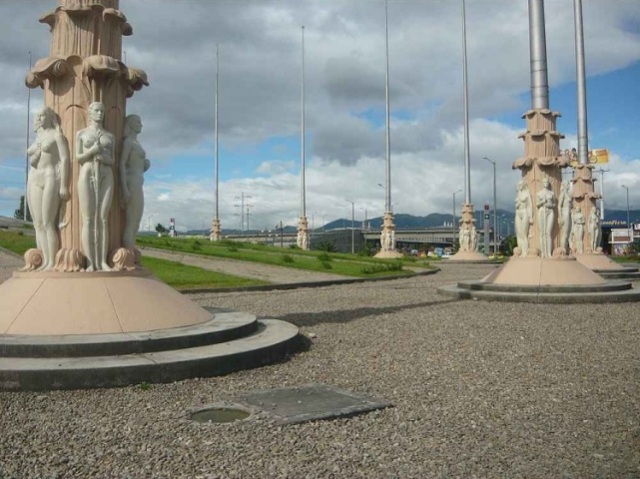Colombia is the name of a country in northwestern South America. Check out a number of fun and interesting facts about Colombia.
Facts About Colombia
A country in northwestern South America, Colombia is credited to be the 26th largest nation in the world. In South America, it claims the distinction of being the fourth largest country, after Brazil, Argentina and Peru. The country stands bordered by Venezuela and Brazil in the east, Ecuador and Peru in the south, Caribbean Sea in the north, Panama in the northwest and Pacific Ocean in the west. Along with that, it also shares maritime borders with Jamaica, Haiti, the Dominican Republic, Honduras, Nicaragua and Costa Rica. The culture of Colombia is known for its diversity. The country has long been influenced by Europeans, Spanish, Africans, Americans, Caribbean and the Middle East people. Though Colombia is predominantly Roman Catholic, yet a number of other festivals, such as the Barranquilla Carnival, are celebrated with immense gaiety. In case you want to learn some more fun and interesting facts about the country called Colombia, the following lines will prove to be of great help. 

Image: By Kmilo05 (Own work) [CC-BY-SA-3.0 (http://creativecommons.org/licenses/by-sa/3.0)], via Wikimedia Commons
Fast Facts
Continent: South America
Area: 1,141,748 km2
Capital: Bogotá
Population: 46,366,364 (2012)
Currency: Peso
Official Languages: Spanish
Independence Day: 20 July 1810
Calling Code: +57
Type Of Government: Unitary State
Fun & Interesting Facts about Colombia
- The official name of Colombia is the ‘Republic of Colombia.
- The official language of Colombia is Spanish.
- Majority of the people of Colombia are Roman Catholics.
- The currency of Colombia is Peso.
- The capital of Colombia is Bogota.
- Colombia follows the system of Presidential Republic.
- Colombia declared independence from Spain in 1810, but came to be recognized only in the year 1819.
- After the collapse of Gran Colombia, in 1830, Colombia was one of the three countries that came into being, the other two being Ecuador and Venezuela.
- The main ethnic groups in Colombia include Mestizo, White, Mulatto, Black, Zambo and Amerindian.
- In terms of population, Colombia is the 29th largest country in the world and the second largest country in South America, next only to Brazil.
- Colombia claims the distinction of being home to the third largest Spanish-speaking population in the world, after Mexico and Spain.
- In the initial days, the territory of Colombia was inhabited by a number of indigenous tribes, including the Muisca, Quimbaya, and Tairona.
- Santa Marta, founded by the Spanish in 1525, is considered to be the first permanent settlement in Colombia.
- The administrative divisions of Colombia comprise of 32 departments (departamentos) and 1 capital district (distrito capital).
- Textiles, food processing, oil, clothing and footwear, beverages, chemicals, cement; gold, coal and emeralds are the main industries in Colombia.
- In terms of ecology, Colombia is regarded as one of the 18 mega diverse countries in the world.
- In Colombia, most of the urban centers have come to be located in the highlands of the Andes Mountains.
- Amazon rainforest, tropical grassland and both Caribbean and Pacific coastlines form a part of the Colombian territory.
- The name 'Colombia' (derived from the name of Christopher Columbus), was adopted by the Republic of Colombia, after it was formed out of the territories of the old Viceroyalty of New Granada.
- Being a part of the Pacific Ring of Fire, Colombia makes up one of those regions in the world that are frequently subject to earthquakes and volcanic eruptions.
- The culture of Colombia represents the influence of Native American, Spanish and other European, African, American, Caribbean, and Middle Eastern influences, as well as other Latin American cultures.
- Magdalena is Colombia’s main river.
- Coffee production contributes to more than 20% of the revenue of Colombia.
- The country does not have specific seasons. Due to its proximity to the equator, Colombia experiences sunlight throughout the year.
- Nearly 12% of world’s coffee is produced in Colombia.
- Colombia is the second largest fresh cut flower exporter in the world.
- The Pico Cristobal Colon is the highest elevation in Colombia, standing at a height of 19,020 feet.
- Colombia is also the most bio diverse country in the world.
- Colombia is habitat to more than 1754 species of bird, the largest in the world.
- It has the second biggest variety of amphibians and the third largest variety of reptiles in the world.
- Quindio Wax palm, the tallest palm tree in the world, is the National Tree of Colombia.
See also
More from iloveindia.com
- Home Remedies | Ayurveda | Vastu | Yoga | Feng Shui | Tattoos | Fitness | Garden | Nutrition | Parenting | Bikes | Cars | Baby Care | Indian Weddings | Festivals | Party ideas | Horoscope 2015 | Pets | Finance | Figures of Speech | Hotels in India : Delhi | Hyderabad | Chennai | Mumbai | Kolkata | Bangalore | Ahmedabad | Jaipur
- Contact Us Careers Disclaimer Privacy Policy Advertise With Us Lifestyle Sitemap Copyright iloveindia.com. All Rights Reserved.







